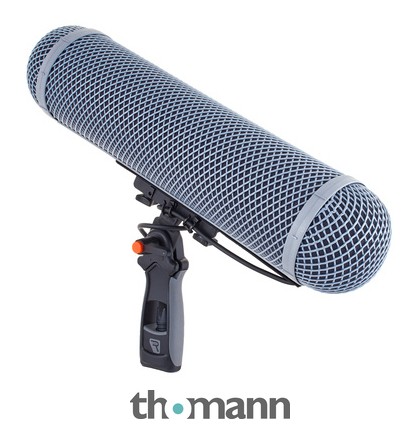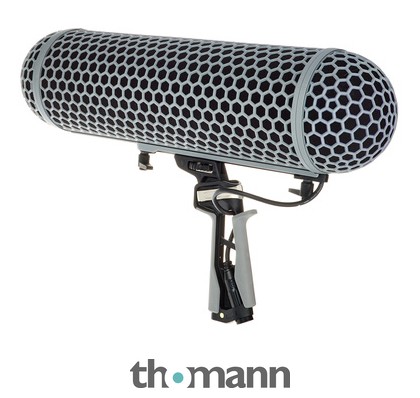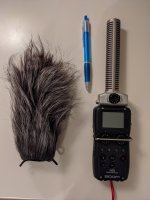I would always recommend a recorder with XLR inputs. That means it's ready for professional microphones and you will avoid nasty surprises.
What about mini jacks? A mini jack can be a mono balanced connection (you would want that) or a stereo unbalanced connection (bad and you would be really wasting the advantages offered by a pro microphone like the ME66). Or maybe it's just a mono jack?
As for mono or stereo that is mostly irrelevant. I mean, if you are using a mono microphone and turns out you want it on both channels later, do it when editing the recording. Note that some recorders (at least the Marantz PMD661-mk2) do a nice trick with a mono microphone, feeding the signal to both channels but using different preamplifier gains. So if it turns out you underestimated sound level, you have a secondary channel with 15 or 20 dB less gain. A lifesaver

So, best advice is:
- XLR means you won't have surprises. (Well, there is a corner case I saw once but I won't mention it!

)
- Don't worry about a mono microphone recording only on one channel. Almost all of the pro microphones except some specialized stereo ones are mono.
And now, the suspension. You need to solve two problems. First, handling noise if you are hand holding. Second, wind noise which can be a real nightmare.
The solution is to use one of those microphone covers known as zeppelins (shaped like one) with a handle. Inside that tube there is a microphone suspension system that helps to avoid handling noise. The zeppelin creates a volume of steady air around the microphone and for stronger winds you can add an additional cover. It's one of those furry covers some guys call dead cats.
Options: I think you can consider three realistic options.
The industry standards are Rycote and Cinela. As Cinela is really expensive I won't mention it further. Rycote is, I think, the best known brand. They offer a really good suspension system called Lyre, and their zeppelins have a very flexible range of sizes so that you can find a good fit for your microphone.

rycote.com
According to Rycote's website you would need the WS 5
Windscreen-System WS4 + Ext.1 + WJ5 + Mount for ME66

www.thomann.de
Rode, the young Australian microphone manufacturer, is selling a more affordable zeppelin system: Rode Blimp.
Windshield System Two movable Rycote holders, Integrated Mogami XLR connecting cables, Angle adjustable pistol grip with XLR connector in the base, Suitable for Rode NTG-1, NTG-2, NTG-3 and other shotgun microphones up to a length of 325 mm, Incl....

www.thomann.de
It licenses the Rycote Lyre system (and I think the parent company of Rode acquired Rycote later) and it includes the furry cover. All of it for 200 euro.
Rycote is much more expensive but it offers some advantages. First, they are known for suplying spare parts in the long term. Second, they offer several Lyre components with different degrees of stiffness, so that you can adapt them better to a given microphone. Rode doesn't offer that option, but it's easy to buy Rycote Lyres (I got some from Audiosense.be in Belgium) and adapt them using a couple of stiff plastic blocks.
In such a setup
it's important that the microphone fits inside the straight tube portion not getting any part of it inside the domes at the ends. So make sure it is long enough. Rode sells an extension kit with an additional tube extension and a longer fur cover which is 65 euro.
So, my opinion? I own a Rode Blimp mk2 with the extension and I think it offers very good value for money. Certainly if offers the right bits which are:
- Zeppelin
- Suspension system
- Fur cover
- A system to help decouple cable handling vibrations from the microphone
A Rycote is a bit more compact and it's better supported. The Blimp looks a bit like a half backed product, it would be trivial to make it compatible with Rycote spare Lyres. But it works. I have used it successfully with an AKG SE300-CK98 combo and, later, with a long shotgun: Rode NTG8. For the latter I had to do some hacking to replace the Lyres with stiffer ones.
I have seen cheaper blimp options looking very similar to the first version of Rode's Blimp. I believe that the first version was just a Chinese OEM which uses a much more cumbersome rubber ring mount for the mic and later Rode decided to use the same Chinese tube and fur but with their own Rycote licensed Lyre suspension system which makes a huge difference if only in durability and convenience.
I would not recommend the cheaper OEM versions, I think the Rode is the sweet spot.
If you happen to be near Bilbao in Spain I can show you the blimp in person.








